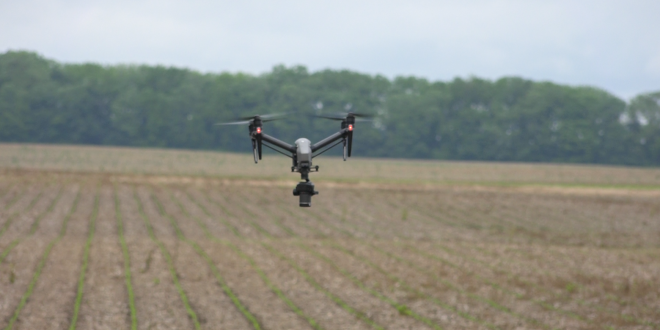Drones. Robot tractors. Smaller equipment. Precision traffic. Soil biology. Technology subscriptions. Will these, and other “futuristic” ideas, be a part of your no-till farm in 10-20 years? As you look ahead 20 years, consider how your farm operation has changed in the last 20. What’s different compared to 2002? I asked three friends (two ag. engineers and a soil scientist) to help with this topic. Here are a few items and practices that may be widespread in a few years.
Drones will be used for seeding cover crops (replacing airplanes and helicopters). They will be more accurate and less expensive. Drones will get bigger than currently allowed, making them more efficient. They will also be used for spraying.
Equipment will get smaller, not bigger. Robots are not new; you’ve already seen driverless tractors. Picture five power units, each matched with a 4-row planter, 30-foot spray boom, and 10-foot header for harvest. The lighter weight will minimize or eliminate soil compaction. Precision traffic will keep three-fourths of the field untrafficked; all operations will be the same width or multiples of that width.
Strip cropping will become more common. Alternating strips of corn and soybeans (and maybe wheat) will lead to higher yields. Intercropping (soybeans drilled between rows of wheat in May) will be easier with precision technology.
Robots designed for irrigation will also be used for manure application during the growing season.
Biology will become more important to no-till farmers, ranking equal to physical and chemical properties of soil. We’re learning that living organisms in the soil, nurtured with continuous no-till and live roots, are essential.
Solar “farms” are controversial, partly because they take prime land out of production. This should change. If the rows of steel posts supporting solar panels are 24 feet apart, why not grow crops on the 20 feet between them. Driverless equipment, 10 feet wide, could be used with soybeans, wheat, and (short) corn.
Computer based technology will be paid by subscription rather than purchased. Like software on your computers at home, updates will arrive automatically.
“Conservation Agriculture” (CA) may replace “No-Till” as the title in the future. CA is based on continuous no-till, but also includes two more components: cover crops and crop rotation. Whether we call it CA or NT, acres will expand rapidly to meet demands from society to improve air and water quality. CA adds carbon (organic matter) to the soil which improves yields and reduces runoff.
Do you remember the New Idea Uni-system manufactured at Coldwater, Ohio? Consider a bigger, more flexible power unit: a high clearance sprayer, on 4 half-tracks. Remove the spraying equipment and pull an 8-row planter. For harvest, attach a header to the front, mount the grain processor under the machine, and auger the grain to a trailer. This could work with several crops, including forage.
Related Content
[Podcast] Great No-Till Research with Don Reicosky and Randall Reeder
Profiles in Passion: No-Till’s Proven Template for Changing Ag







